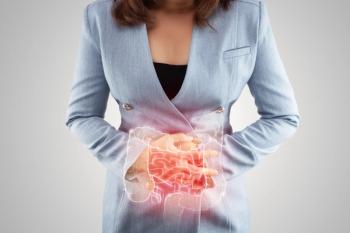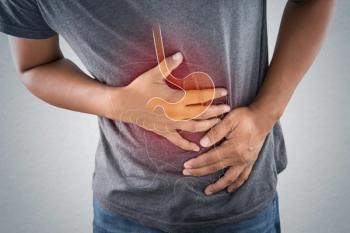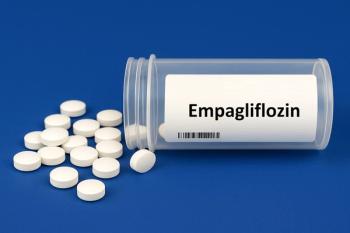
Cannabinoid Hyperemesis Syndrome: Diagnosis and Management
A deep dive for pharmacists into this frequently debilitating disorder
Background
Cannabinoid hyperemesis syndrome (CHS) is a disabling illness characterized by episodic acute vomiting and associated with chronic cannabis use.1 First described in 2004, CHS remains poorly understood and challenging to diagnose and manage. With expanding medicinal and recreational use, decreasing perception of risk,2 and increasing potency of cannabis,3 the burden of CHS on patients and health care providers will likely continue to grow.
Epidemiology
Prevalence of CHS is uncertain but likely increasing. A 2015 study of emergency department (ED) presentations in a US state following legalization of medical cannabis found nearly double the rate of cyclic vomiting presentations and higher rates of cannabis use among these patients.4 Findings of a 2018 study estimated that 2.8 million people in the United States (approximately 1% of the population) use cannabis chronically and have symptoms consistent with CHS.5
Across study findings, CHS tends to present in the late teens or the 20s.6-8 One research group emphasizes challenges in both diagnosis and epidemiology due to widespread use of cannabis to self-treat nausea and the relatively low rates at which patients follow up and stop using cannabis—which is required to meet current Rome IV diagnostic criteria for adults (Table 1).9,10
Cannabis use in the United States has long been associated with racist and classist laws and law enforcement (despite liberalization11), whereas access to health care, including mental health– and substance-related care, remains disparate and unjust.12 Clinicians can help mitigate further harm and disparities through careful and thorough treatment of all patients with possible CHS.
Morbidity
CHS can lead to repeated presentations and admissions, with sequelae including hypovolemia, electrolyte derangements, acute kidney injury,13 esophageal injury, weight loss, and prolonged debility.6 There are multiple reports of fatalities believed to be related to CHS, including 1 from torsade de pointes due to electrolyte derangement and antiemetic-driven QT prolongation.14,15
Clinical Presentation
CHS has 3 clinical phases: prodromal, hyperemetic, and recovery.1,6 The prodrome comprises months of morning nausea while chronically using cannabis and is often accompanied by weight loss. The hyperemetic phase includes acute-onset nonbilious vomiting up to several times per hour, plus diffuse abdominal pain. In both phases, compulsory hot bathing for relief of symptoms is common; for example, in one systematic review, this was reported in 10 of 14 pediatric cases.6 Rome IV criteria include this feature as a “supportive remark” (Table 19,10). In true CHS, the recovery phase follows cessation of cannabis use, though symptoms can persist for weeks prior to full remission.1
Diagnostic evaluation
The hyperemetic phase often prompts ED presentation, in which vomiting and abdominal pain present a diagnostic challenge. Following basic clinical and lab evaluation (including lipase), patients without diagnoses often undergo abdominopelvic CT and then, if admitted, endoscopic gastroduodenoscopy (EGD). Any testing for substances should be interpreted carefully, as false positives and negatives occur, and quantitative tests may be difficult to interpret.16 Although CHS may be considered early on, it is vital to avoid anchoring and neglect of other dangerous etiologies while also implementing supportive care. “Mimickers” of CHS that can elude CT and EGD include elevated intracranial pressure, acute intoxication, ovarian or testicular torsion, gastroesophageal dysmotility, mitochondrial disorders, and acute intermittent porphyria (see Table 1).1,7,9,10
Pathophysiology
CHS is still considered a “functional disorder” because of the incomplete elucidation of its pathophysiology.10 However, clinicians should understand probable mechanisms to guide treatment and educate patients. These include (1) known proemetic effects of high-dose tetrahydrocannabinol, likely via dopamine signaling at the chemoreceptor trigger zone; (2) progressive cannabinoid receptor downregulation; (3) abnormal stress response due to dysregulation of the hypothalamic-pituitary axis and sympathetic nervous system; (4) upregulation of the transient receptor potential vanilloid 1 (TRPV1) receptors involved in pain, nausea, and thermoregulation; (5) delayed gastric emptying; and (6) predisposing factors, including genetic polymorphisms and untreated mood disorders.17-20
During the hyperemetic phase, persistent vomiting drives lipolysis, releasing lipophilic THC stores and fueling a proemetic feedback loop exacerbated by starvation ketosis.17,19
Approach to Management
We lack high-grade evidence treatments specific to CHS, but essential management includes acute stabilization, longitudinal primary and mental health care to reduce harm of cannabis use, and serial reconsideration of diagnosis.
Acute Pharmacotherapy
Treatment during the hyperemetic phase includes rehydration with bolus intravenous (IV) crystalloid fluids, IV dextrose-containing fluids (to arrest ketosis), correction of electrolyte abnormalities, and treatment of nausea (Table 2). Gastric acid suppression, nasogastric tube placement, and gastroenterology consultation should be considered to mitigate sequelae, including catastrophic esophageal rupture.
In the pediatrics literature, haloperidol and topical capsaicin cream have been reported as effective.21,22 Among pediatric patients in 2 systematic reviews published in 2021, benzodiazepines were reportedly effective in certain patients; one review noted that ondansetron was reportedly effective in only 2 of 5 pediatric patients who received it.6,23 Medications reported as frequently ineffective in these reviews include metoclopramide, promethazine, and opioids.
Adult research reflects similar patterns. In a recent randomized controlled trial (RCT) of 33 adults, haloperidol (0.05 mg/kg or 0.1 mg/ kg IV), which blocks proemetic dopaminergic stimulation at the chemoreceptor trigger zone, was found superior at both doses to ondansetron (8 mg IV) in the primary outcome: the average of changes in abdominal pain and nausea scores at 2 hours. Three of the patients who received the higher dose of haloperidol had specific adverse effects (AEs): 2 dystonic reactions and 1 akathisia.24
Topical capsaicin cream (0.025%- 0.1%) applied to the abdomen has been reported to be effective for treating CHS in adults, via activation of TRPV1 receptors (downregulated in CHS), leading to decreased substance P signaling in the brain stem.25 TRPV1 receptors are also activated by temperatures over 43 °C, explaining relief from hot- water bathing and abdominal hot packs.26 Oral aprepitant, often used for chemotherapy-induced nausea, was reportedly effective in 1 adult case report of CHS, via inhibition of neuromedin K tachykinin receptor– binding by substance P.27
Haloperidol and topical capsaicin have pathophysiologic bases and evidence for use in CHS. They are likely more effective than 5-HT3 antagonists (eg, ondansetron), though evidence amounts to systematic reviews of cases and 1 small RCT. Benzodiazepines have been reported effective in some cases but can pose a risk of dependence.
Nonpharmacologic Management
Adolescents with CHS and cannabis use disorder (CUD) benefit from a combination of pharmacologic treatment, behavioral interventions, and family support.
By Rome IV criteria, the diagnosis of CHS is confirmed only when symptoms resolve upon ceasing use. Clinicians should help patients toward this goal following physiologic stabilization. To approach substance use disorders, the American Academy of Pediatrics recommends the Screening, Brief Intervention, and Referral to Therapy tool.28 Evidence-based, validated screening tools for adolescents include Screening to Brief Intervention; the Brief Screener for Tobacco, Alcohol, and Other Drugs; and the Alcohol, Smoking, and Substance Involvement Screening Test. These help quantify the degree of substance use to build insight and direct referrals.
Brief intervention can include motivational interviewing toward reducing harm and/or use. This may include providing information about potential cognitive, psychiatric, and physical harms of cannabis use, plus clear patient-centric recommendations. Many adolescents use cannabis to manage anxiety, depression, and/or prior trauma, in which case it is crucial to offer safer options, including psychotherapy and pharmacotherapy with well-studied efficacy and AEs.
All patients should be referred to practical primary care, with an appointment scheduled and provider handoff given, if feasible. Adolescents with multiple ED presentations for CHS, high-risk substance use (eg, injection use, combination of sedatives), and/or cooccurring mental health disorders may benefit from referral to specialty care.28 The American Society of Addiction Medicine criteria can guide appropriate level of care, whereas the Substance Abuse and Mental Health Services Administration provider locator can identify local resources. This area requires prompt policy attention, because just 26% of US addiction treatment facilities offer services for adolescents.29
Psychosocial treatment modalities, including cognitive-behavioral therapy, motivational enhancement therapy, contingency management, and family-based interventions, have been associated with reduced frequency of cannabis use and dependence severity.30,31 The Community Reinforcement and Family Training method aims to improve family members’ understanding of addiction and, by creating a supportive environment, can help motivate adolescents to seek care.32
Ongoing Pharmacotherapy
There are limited data for long- term pharmacotherapy for CUD. In 1 RCT of 116 patients (including 20 younger than age 18 years), N-acetylcysteine 1200 mg twice daily was associated with an odds ratio of 2.4 for abstinence over 8 weeks, whereas a subsequent RCT of 302 patients over 12 weeks showed no difference between groups, though subgroup analysis suggested benefit among younger patients.33,34 Although patients receive treatment for CUD, they should continue receiving any medication that is safely and effectively treating CHS-related nausea, with the mutual expectation that nausea should decrease over days to weeks. Any patient stopping or reducing use should be monitored and treated for cannabis withdrawal symptoms, including insomnia, anxiety, irritability, and depression (Table 2).35
Takeaways
Cannabis is the third most commonly used substance among adolescents in the United States.36 Potency and societal acceptance are rising, with use increasing further during the COVID-19 pandemic.37 CHS is one serious consequence. Presentation to care during the prodromal or hyperemetic phases of CHS can prompt a variety of short- and long-term outcomes, from repeated ED visits with catastrophic sequelae to successful symptom control and patient-centric connection with long-term care. When pediatricians are aware, CHS symptoms can be the canary in the coal mine, leading patients to multidisciplinary support, insight, motivation, and long-term recovery.
References
1. Allen JH, Moore GMD, Heddle R, Twartz JC. Cannabinoid hyperemesis: cyclical hyperemesis in association with chronic cannabis abuse. Gut. 2004;53(11):1566-1570. doi:10.1136/gut.2003.036350
2. Carliner H, Brown QL, Sarvet AL, Hasin DS. Cannabis use, attitudes, and legal status in the US: a review. Prev Med. 2017;104:13-23. doi:10.1016/j.ypmed.2017.07.008
3. ElSohly MA, Mehmedic Z, Foster S, Gon C, Chandra S, Church JC. Changes in cannabis potency over the last 2 decades (1995–2014): analysis of current data in the United States. Biol Psychiatry. 2016;79(7):613-619. doi:10.1016/j.biopsych.2016.01.004
4. Kim HS, Anderson JD, Saghafi O, Heard KJ, Monte AA. Cyclic vomiting presentations following marijuana liberalization in Colorado. Acad Emerg Med. 2015;22(6):694-699. doi:10.1111/acem.12655
5. Habboushe J, Rubin A, Liu H, Hoffman RS. The prevalence of cannabinoid hyperemesis syndrome among regular marijuana smokers in an urban public hospital. Basic Clin Pharmacol Toxicol. 2018;122(6):660-662. doi:10.1111/bcpt.12962
6. Zhu JW, Gonsalves CL, Issenman RM, Kam AJ. Diagnosis and acute management of adolescent cannabinoid hyperemesis syndrome: a systematic review. J Adolesc Health. 2021;68(2):246-254. doi:10.1016/j.jadohealth.2020.07.035
7. Simonetto DA, Oxentenko AS, Herman ML, Szostek JH. Cannabinoid hyperemesis: a case series of 98 patients. Mayo Clin Proc. 2012;87(2):114-119. doi:10.1016/j.mayocp.2011.10.005
8. Bollom A, Austrie J, Hirsch W, et al. Emergency department burden of nausea and vomiting associated with cannabis use disorder: US trends from 2006 to 2013. J Clin Gastroenterol. 2018;52(9):778-783. doi:10.1097/MCG.0000000000000944
9. Venkatesan T, Levinthal DJ, Li BUK, et al. Role of chronic cannabis use: cyclic vomiting syndrome vs cannabinoid hyperemesis syndrome. Neurogastroenterol Motil. 2019;31(S2). doi:10.1111/nmo.13606
10. Stanghellini V, Chan FKL, Hasler WL, et al. Gastroduodenal disorders. Gastroenterology. 2016;150(6):1380-1392. doi:10.1053/j.gastro.2016.02.011
11. Sabet K, Jones W. Marijuana legalization in the United States: a social injustice. University of Pennsylvania Journal of Law & Public Affairs. 2019-2020;5(1). November 2019.Accessed February 24, 2022.
12. Patton D. A history of United States cannabis law. J Law Health. 2020;34(1):1-29.
13. Habboushe J, Sedor J. Cannabinoid hyperemesis acute renal failure: a common sequela of cannabinoid hyperemesis syndrome. Am J Emerg Med. 2014;32(6):690.e1-690.e2. doi:10.1016/j.ajem.2013.12.013
14. Nourbakhsh M, Miller A, Gofton J, Jones G, Adeagbo B. Cannabinoid hyperemesis syndrome: reports of fatal cases. J Forensic Sci. 2019;64(1):270-274. doi:10.1111/1556-4029.13819
15. Von Both I, Santos B. Death of a young woman with cyclic vomiting: a case report. Forensic Sci Med Pathol. 2021;17(4):715-722. doi:10.1007/s12024-021-00410-z
16. Wu PE. Cannabinoid hyperemesis syndrome: caution with urine drug screens for marijuana. BMJ. 2019;366:l5621. doi:10.1136/bmj.l5621
17. Sorensen CJ, DeSanto K, Borgelt L, Phillips KT, Monte AA. Cannabinoid hyperemesis syndrome: diagnosis, pathophysiology, and treatment—a Systematic Review. J Med Toxicol. 2017;13(1):71-87. doi:10.1007/s13181-016-0595-z
18. Gajendran M, Sifuentes J, Bashashati M, McCallum R. Cannabinoid hyperemesis syndrome: definition, pathophysiology, clinical spectrum, insights into acute and long-term management. J Investig Med. 2020;68(8):1309-1316. doi:10.1136/jim-2020-001564
19. Perisetti A, Gajendran M, Dasari CS, et al. Cannabis hyperemesis syndrome: an update on the pathophysiology and management. Ann Gastroenterol. 2020;33(6):571-578. doi:10.20524/aog.2020.0528
20. DeVuono MV, Parker LA. Cannabinoid hyperemesis syndrome: a review of potential mechanisms. Cannabis Cannabinoid Res. 2020;5(2):132-144. doi:10.1089/can.2019.0059
21. Jones JL, Abernathy KE. Successful treatment of suspected cannabinoid hyperemesis syndrome using haloperidol in the outpatient setting. Case Rep Psychiatry. 2016;3614053. doi:10.1155/2016/3614053
22. Graham J, Barberio M, Wang GS. Capsaicin cream for treatment of cannabinoid hyperemesis syndrome in adolescents: a case Series. Pediatrics. 2017;140(6):e20163795. doi:10.1542/peds.2016-3795
23. Reinert JP, Niyamugabo O, Harmon KS, Fenn NE. Management of pediatric cannabinoid hyperemesis syndrome: a review. J Pediatr Pharmacol Ther. 2021;26(4):339-345. doi:10.5863/1551-6776-26.4.339
24. Ruberto AJ, Sivilotti MLA, Forrester S, Hall AK, Crawford FM, Day AG. Intravenous haloperidol versus ondansetron for cannabis hyperemesis syndrome (HaVOC): a randomized, controlled trial. Ann Emerg Med. 2021;77(6):613-619. doi:10.1016/j.annemergmed.2020.08.021
25. Pourmand A, Esmailian G, Mazer-Amirshahi M, Lee-Park O, Tran QK. Topical capsaicin for the treatment of cannabinoid hyperemesis syndrome, a systematic review and meta-analysis. Am J Emerg Med. 2021;43:35-40. doi:10.1016/j.ajem.2021.01.004
26. Rudd JA, Nalivaiko E, Matsuki N, Wan C, Andrews PL. The involvement of TRPV1 in emesis and anti-emesis. Temperature. 2015;2(2):258-276. doi:10.1080/23328940.2015.1043042
27. Parvataneni S, Varela L, Vemuri-Reddy SM, Maneval ML. Emerging role of aprepitant in cannabis hyperemesis syndrome. Cureus. 2019;11(6):e4825. doi:10.7759/cureus.4825
28. Committee on Substance Use and Prevention. Substance use screening, brief intervention, and referral to treatment. Pediatrics. 2016;138(1):e20161210. doi:10.1542/peds.2016-1210
29. Alinsky RH, Hadland SE, Matson PA, Cerda M, Saloner B. Adolescent-serving addiction treatment facilities in the United States and the availability of medications for opioid use disorder. J Adolesc Health. 2020;67(4):542-549. doi:10.1016/j.jadohealth.2020.03.005
30. Gates PJ, Sabioni P, Copeland J, Le Foll B, Gowing L. Psychosocial interventions for cannabis use disorder. Cochrane Database Syst Rev. 2016;(5):CD005336. doi:10.1002/14651858.CD005336.pub4
31. Waldron HB, Turner CW. Evidence-Based Psychosocial Treatments for Adolescent Substance Abuse. J Clin Child Adolesc Psychol. 2008;37(1):238-261. doi:10.1080/15374410701820133
32. Archer M, Harwood H, Stevelink S, Rafferty L, Greenberg N. Community reinforcement and family training and rates of treatment entry: a systematic review. Addiction. 2020;115(6):1024-1037. doi:10.1111/add.14901
33. Gray KM, Carpenter MJ, Baker NL, et al. A double-blind randomized controlled trial of N-acetylcysteine in cannabis-dependent adolescents. Am J Psychiatry. 2012;169(8):805-812. doi:10.1176/appi.ajp.2012.12010055
34. Gray KM, Sonne SC, McClure EA, et al. A randomized placebo-controlled trial of N-acetylcysteine for cannabis use disorder in adults. Drug Alcohol Depend. 2017;177:249-257. doi:10.1016/j.drugalcdep.2017.04.020
35. Brezing CA, Levin FR. The current state of pharmacological treatments for cannabis use disorder and withdrawal. Neuropsychopharmacology. 2018;43(1):173-194. doi:10.1038/npp.2017.212
36. Johnston L, Miech R, O’Malley P, Bachman J, Schulenberg J, Patrick M. Monitoring the future: 2020 overview, key findings on adolescent drug use. Natl Inst Drug Abuse. Published online 2021.
37. Romm KF, Patterson B, Crawford ND, et al. Changes in young adult substance use during COVID-19 as a function of ACEs, depression, prior substance use and resilience. Subst Abuse. 2022;43(1):212-221. doi:10.1080/08897077.2021.1930629
Newsletter
Pharmacy practice is always changing. Stay ahead of the curve with the Drug Topics newsletter and get the latest drug information, industry trends, and patient care tips.




































































































































